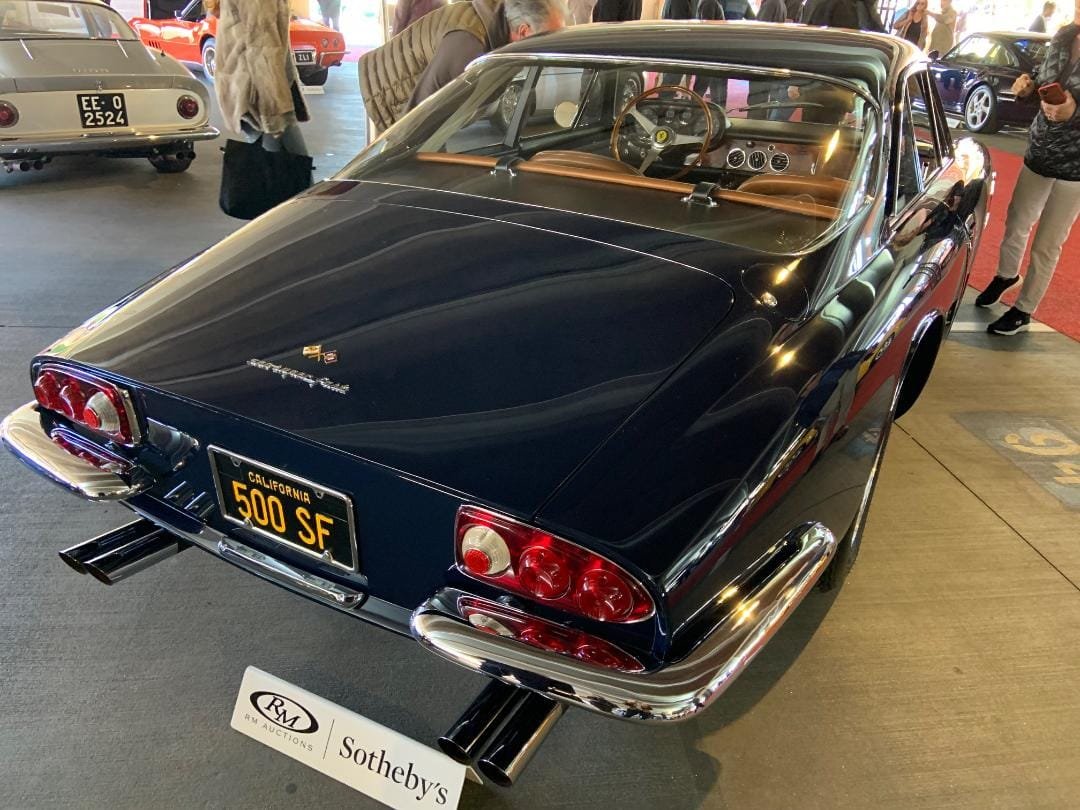The 1966 Ferrari 500 Superfast Series II shown here is a beautiful supercar noted for it’s great styling and powerful V-12 engine. Very rare models indeed. Total examples produced for the Superfast Series I and II were only 24. The 1966 Superfast was the flagship Ferrari grand touring model of the 60’s.

The Ferrari Company
After working for Alfa Romeo as a test driver and running an aircraft and tooling parts company (AAC) supplying the Italian government during the second world war, Enzo Ferrari, a race car enthusiast, founded Ferrari S.p.A in 1947. His AAC parts company was then merged into this new firm.
Ferrari’s new company worked building high-performance sports cars. The company built its first road car, the 125 S, debuting in 1947. This model was powered by a V-12 engine on a modified Fiat chassis.
Next were popular models, such as the 250 GTO and the 275 GTB during the 1950’s and 1960’s. The automobiles not only offered racing performance along with elegant styling. For decades, Ferrari dominated racing and acquired the reputation for producing high end sports cars. Just a few races that Ferrari dominated were the 24 Hours of Le Mans and Formula One World Championship. Ferrari has won more than 5,000 races, including 16 Constructors’ Championships and 15 Drivers’ Championships in Formula One. This success on the track helped to further cement Ferrari’s reputation as a manufacturer of world-class sports cars.Today, many Ferrari models have sold for millions of dollars.
During the 1970s Ferrari had financial problems and was eventually taken over by Fiat in 1969.
Ferrari 500 Superfast Styling
The Superfast coachwork was highly influenced by the outgoing 400 Superamerica Aerodinamico Coupe. The Ferrari Superfast was designed to be a luxurious, exclusive grand touring saloon. Within its sleek lines and curves the model exemplifies the elegance of a luxury sports car. The Superfast sharp angles and aerodynamic shape creates a look that is both aggressive and graceful. Luxury amenities included power windows and power steering, the highest grade leather upholstery, and a teak accented dashboard. A very luxurious performance automobile.
1966 Ferrari 500 Superfast II Specifications
The 1966 Ferrari 500 engine is a 302 cubic inch V-12 delivering a powerful 400 HP. IT is said that top speed reached 175 MPH.
Transmission is a five speed manual.
Four wheel disc brakes.
The suspension system features double wishbones with coil springs and hydraulic shock absorbers,
Related Auto Museum Online articles are..
Reference material includes…
These cars combined racing-inspired performance with elegant design, quickly establishing Ferrari as a leader in the high-end sports car market. The Ferrari 250 GTO is one of the most valuable and sought-after classic cars in the world, with some examples selling for more than $50 million.
Ferrari’s popularity stems from several things. Foremost are speed, luxury and the prestige of the name. Ferrari’s excellent race winning history adds to these. The popularity remains and is even growing among collectors. Many models are considered quite rare.Ferrari’s limited production runs made each model a coveted item among collectors.
The highest sales price recorded to date for a 1966 Ferrari 500 Superfast II is over $1.6 million.
(Article and photos copyright Auto Museum Online)



